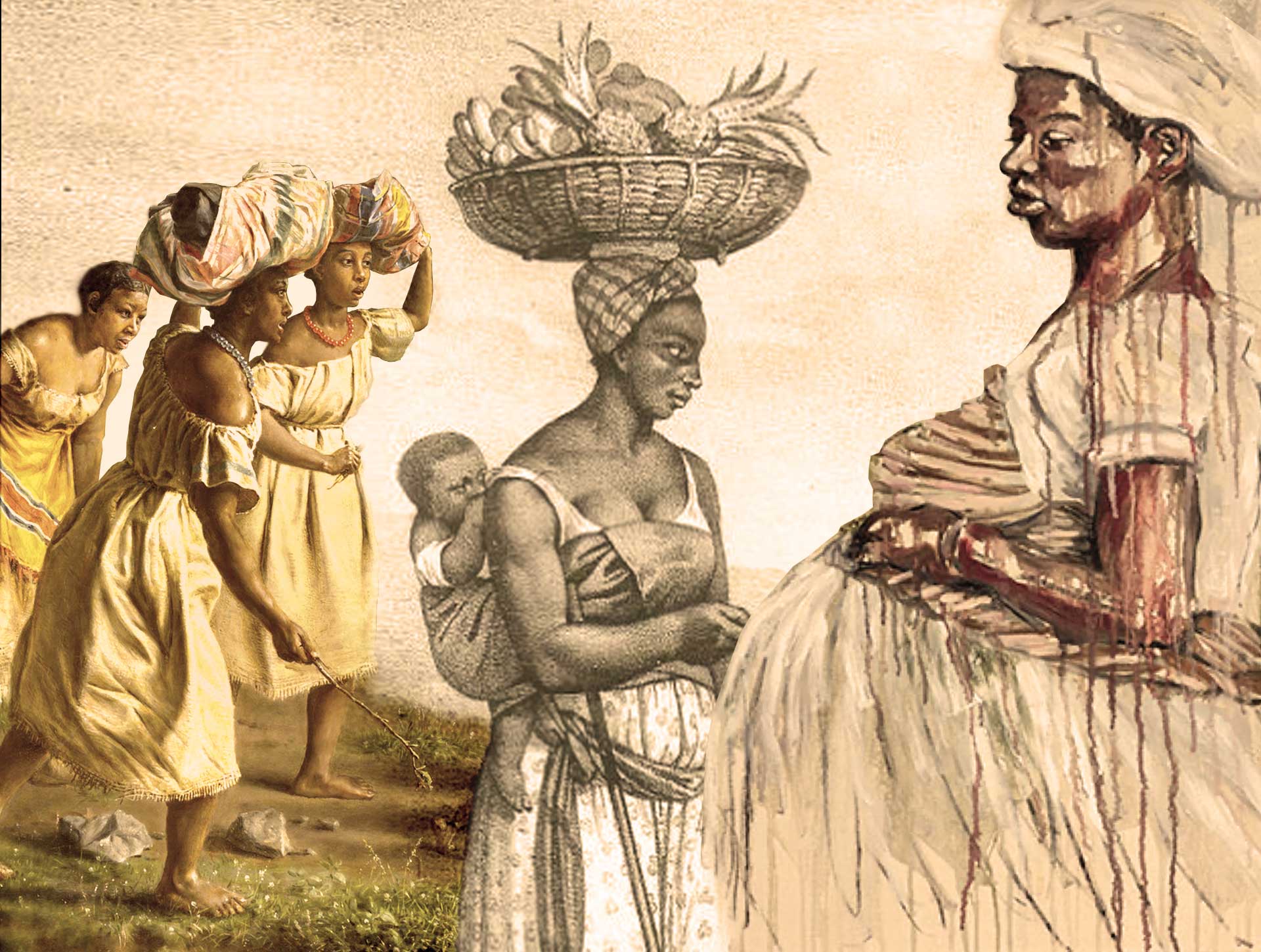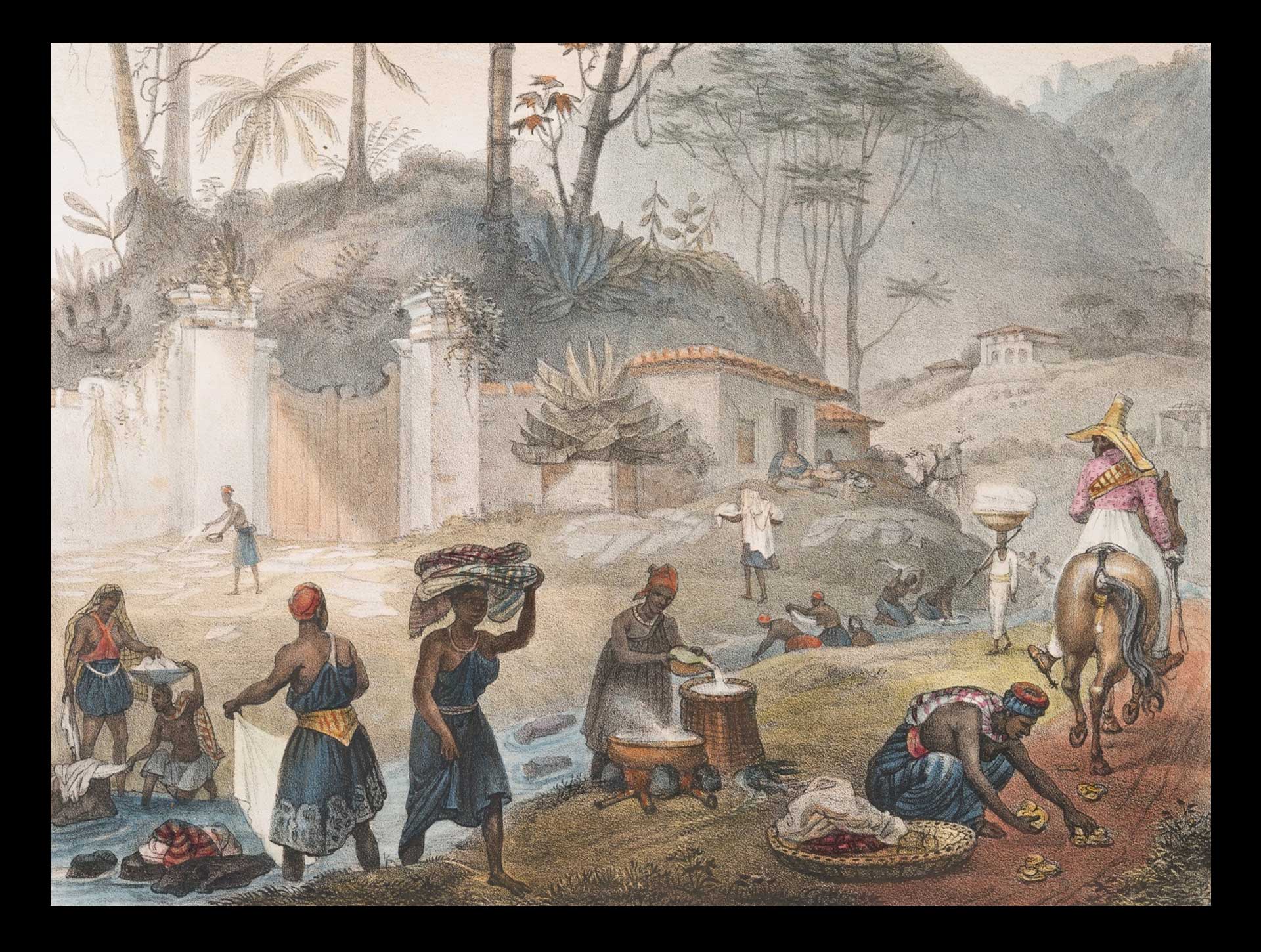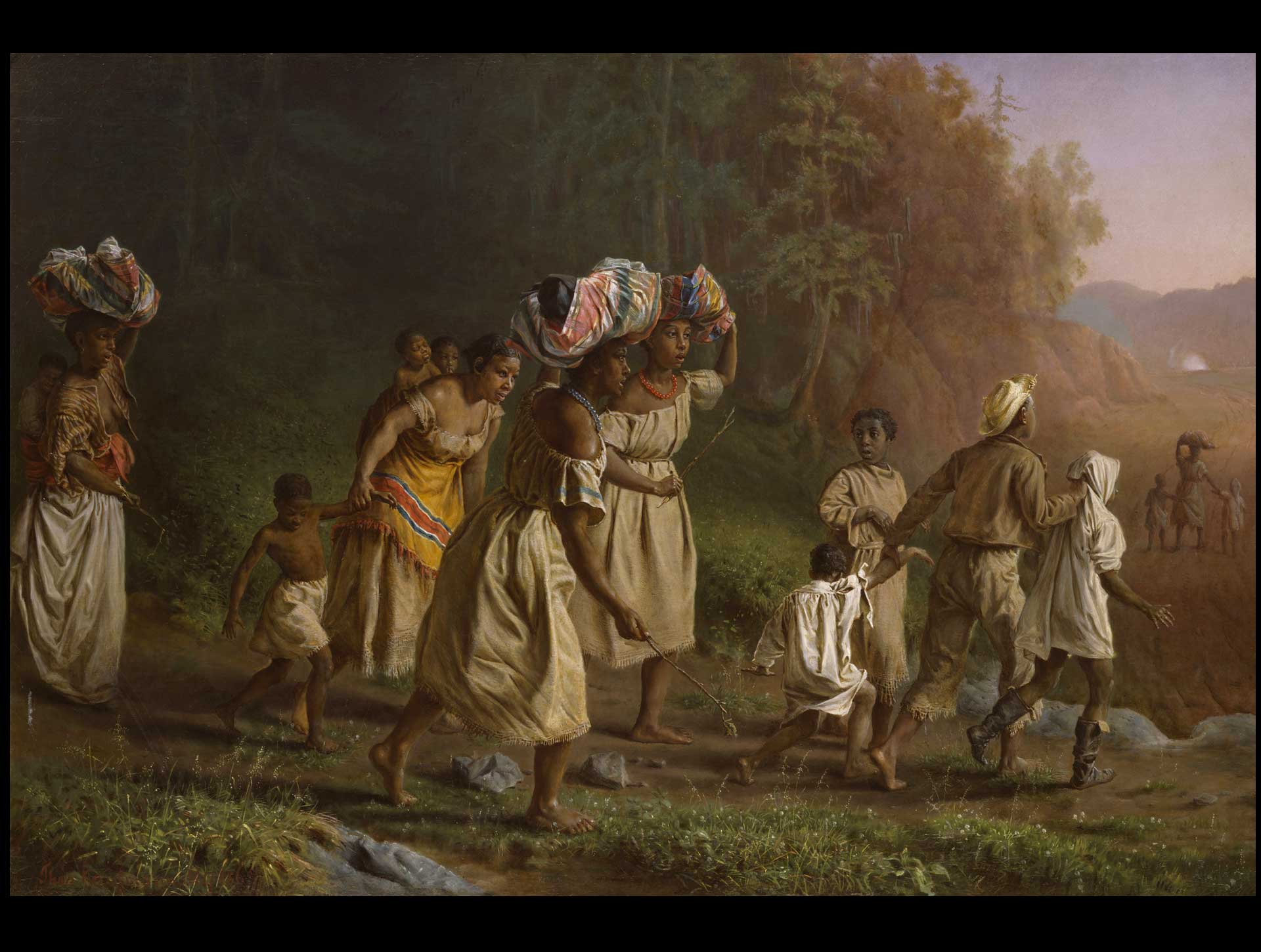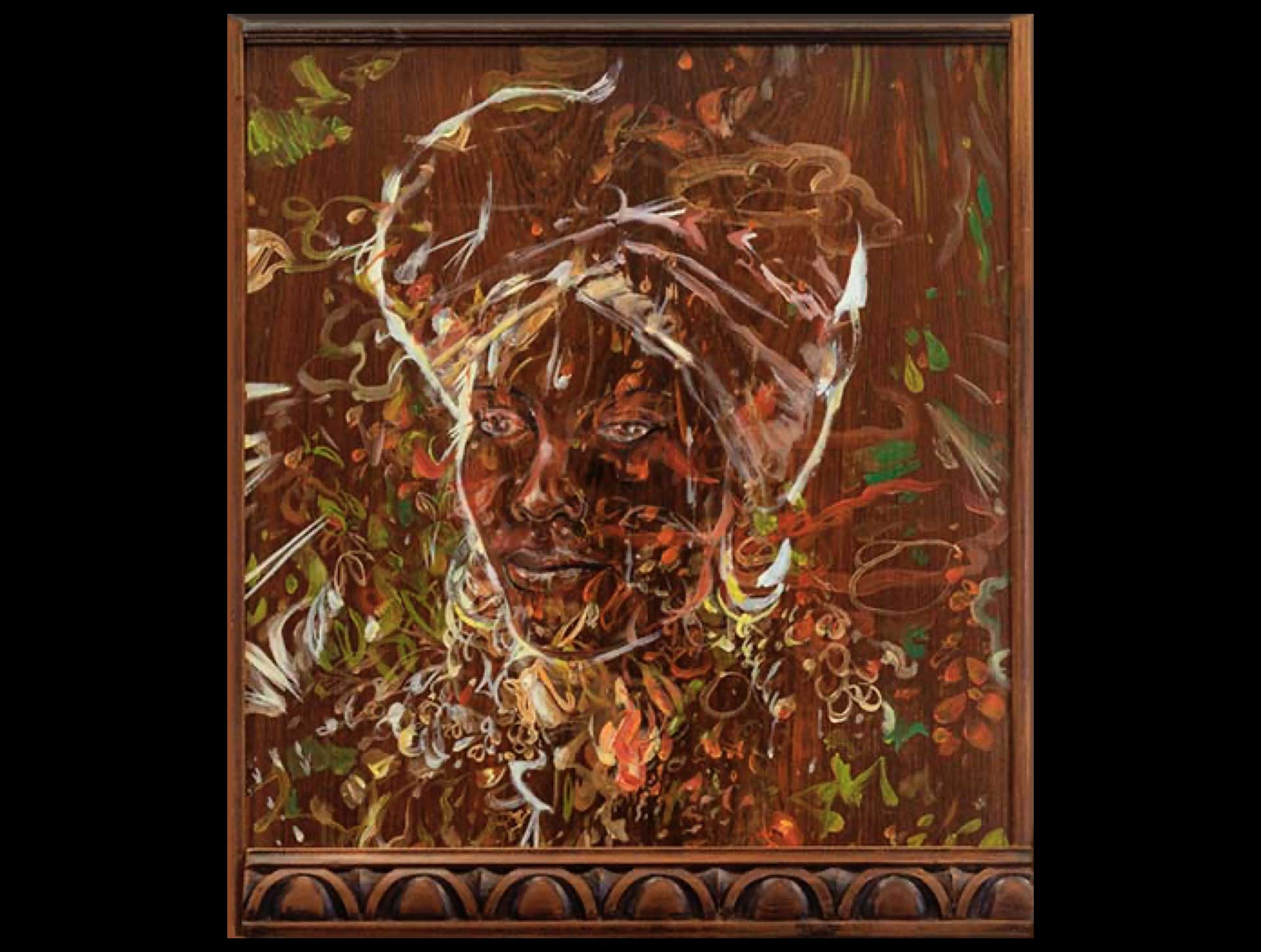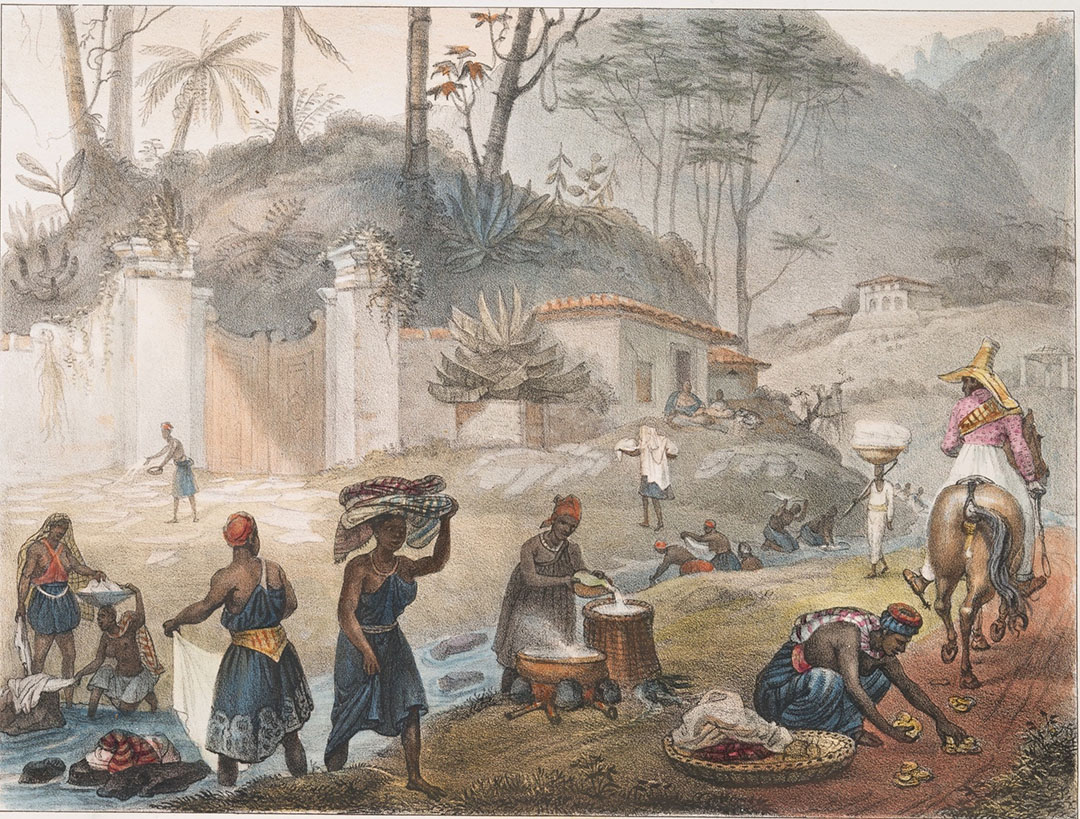PALIMPSESTS
Self-Fashioning and Refashioning
< Return to Self-Fashioning and Refashioning
< Return to Palimpsests
Referenced works
Jean-Baptiste Debret, Lavadeiras do Rio da Laranjeiras (1826). Watercolor, 16.6 × 22.3 cm. Museu do Açude, Rio de Janeiro, Brazil.
Johan Moritz Rugendas, Negrèsses de Rio-Janeiro (1835). Engraving. Biblioteca Nacional, Rio de Janeiro, Brazil.
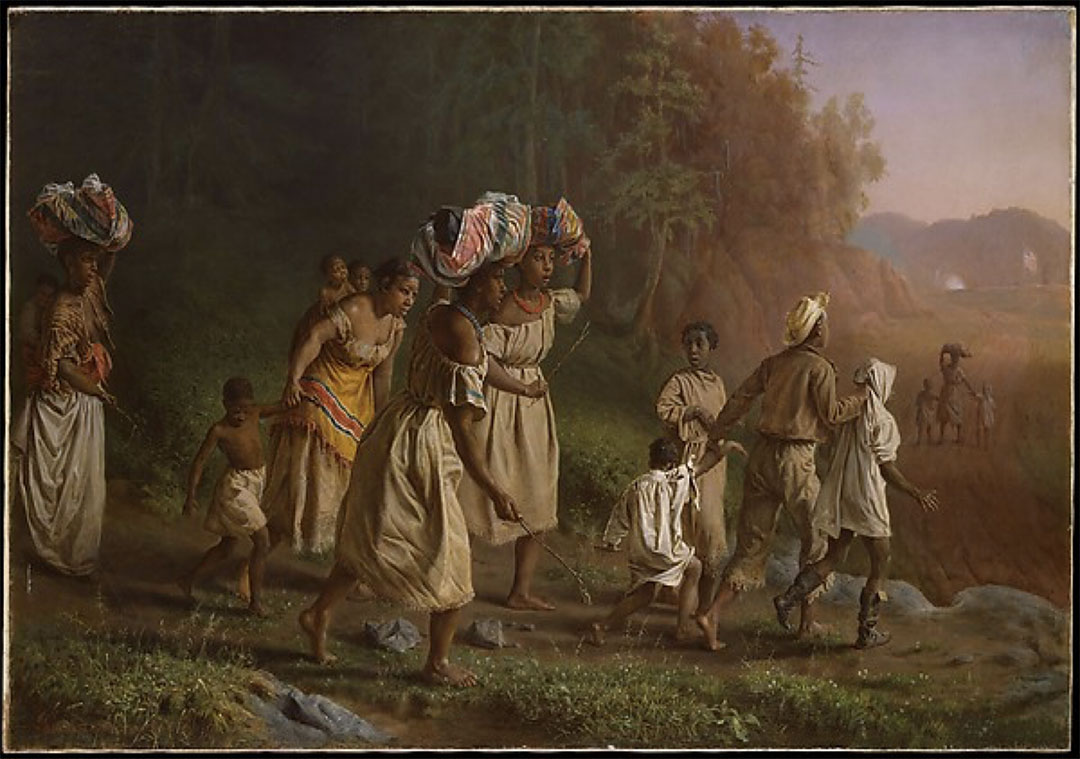
Theodor Kaufmann, On to Liberty (1867). Oil on Canvas; 36 x 56 in. (91.4 x 142.2 cm). Metropolitan Museum of Art, New York, USA.
Panmela Castro, Catarina Cassage (2020). Oil on canvas, 69 x 50 cm. Acervo da Pinacoteca do Estado de São Paulo. Projeto Enciclopédia Negra (Companhia das Letras em parceria com a Pinacoteca de São Paulo, apoio do Instituto Ibirapitanga e colaboração do Instituto Soma Cidadania Criativa). Doação do artista, por intermédio da Associação Pinacoteca Arte e Cultura – APAC, 2021
Rodrigo Bueno, Narcisa Ribeiro (2020). Oil on jacaranda wood, 67.3 x 60.5 cm. Acervo da Pinacoteca do Estado de São Paulo. Projeto Enciclopédia Negra (Companhia das Letras em parceria com a Pinacoteca de São Paulo, apoio do Instituto Ibirapitanga e colaboração do Instituto Soma Cidadania Criativa). Doação do artista, por intermédio da Associação Pinacoteca Arte e Cultura – APAC, 2021
“Narcisa Ribeiro.” In Enciclopedia Negra. Flávio dos Santos Gomes, Jaime Lauriano, and Lilia Moritz Schwarcz. Sao Paulo: Companhia das Letras, 2021; p. 455.


